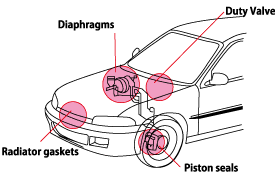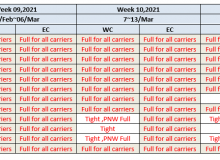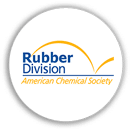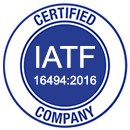Tolerance Factors for Molded Rubber Products
What are the factors that affect the tolerances of molded rubber products? Many factors in the manufacturing process can affect the tolerances of the molded rubber product. In general, the consistency of dimensions will be contingent on the rubber material, mold tool, product design, and conditions of measurement.

Shrinkage
All rubber go through some degree of shrinkage as it cools after molding. Depending on the material compound, its degree of shrinkage can be affected by variations in cure time, temperature, pressure, inserts, and other factors. It is the job of the mold designer and rubber compounder to calculate the estimated shrinkage of the particular compound then plan the mold cavity size accordingly to allow for shrinkage. Although the mold cavity is cut with consideration to the estimated shrinkage, the variable nature of rubber still calls for sufficient tolerance for some dimensions. The shrinkage of rubber is contingent upon volume. The more complicated the geometry of the rubber product, the more variable the shrinkage will be throughout the product. The rubber manufacturer could work at reducing shrinkage for tighter tolerances, but shrinkage cannot be eliminated completely.
Mold Design
Molds can be designed and built to varying levels of precision with higher costs for tighter tolerance molds. With any type of mold, there will be some variance from each cavity to the next. The tolerances on the product must allow for this fact. How accurately the various plates forming the mold cavity come together can also affect the precision of the product’s dimensions. For molded rubber products requiring very tight tolerances, greater precision in the design work and machining would then warrant greater tooling costs than for a typical commercial requirement.
See the RMA Standard Dimensional Tolerances
Trim and Finish
Flash, or the excessive material sometimes attached to the molded product, are usually removed during the trimming and finishing operations of the manufacturing process. Most of the time the flash would be removed without affecting important dimensions, but in some instances material might be removed from the part itself. For flash occurring at the mold parting lines, mechanical trimming can be used for higher precision at that dimension.
Inserts
Inserts, such as metal, plastic, and fabric, can also affect the tolerance of the molded rubber product. Factors such as the insert’s size in relation to the mold cavity, location of the inserts with respect to other dimensions, proper hole spacing to match with mold pins, and the fact that the inserts will be heated during the molding process all must be considered. An experienced rubber manufacturer would be able to advise on design features which would affect the product’s dimensional tolerances.
Distortion
Heat and cold can alter the shape of rubber, the degree and temperatures of which varies depending on the material and individual product. When a rubber product is removed from its mold, it can become distorted if it is stressed before allowed to cool; e.g. being packed for shipment before the rubber has fully set. This type of distortion can be minimized by storing the product carefully at room temperature for at least 24 hours before heavy handling. Depending on the rubber polymer, some products may need to be stored at lower temperatures then heated to above room temperature in order to reduce distortion.
Environmental Storage Conditions
Temperature
Compared to other types of materials, rubber expands more easily and at a much higher rate. In order to have consistent dimensional measurements on a molded rubber product, the temperature and time required to stabilize the part at that temperature must be consistent when the product is being measured.
Humidity
Some rubber materials absorb more moisture than others; consequently, the dimensions measured could be affected by the amount of moisture in the product. This effect may be minimized by making sure the product is left to cool in a controlled humidity and temperature area for at least 24 hours. Looser tolerances should be expected for products with moisture absorbing capability.
Have a question? Please fill out the form below to receive information regarding your inquiry. You may also give us a call at (626) 965-9966.
Error: Contact form not found.











